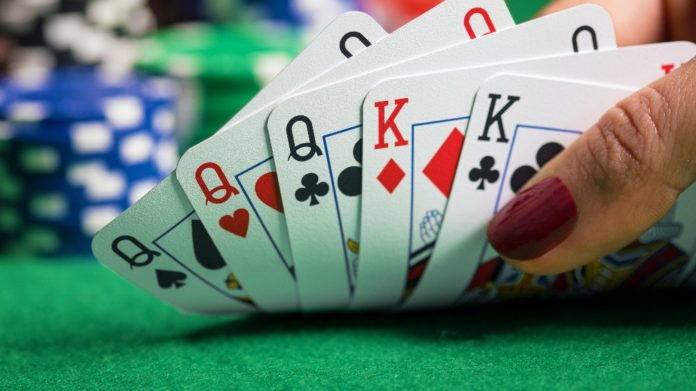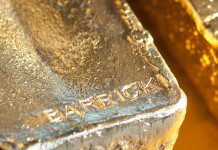
THE rehabilitation of the mining sector has been remarkable since 2017 when it racked up a fifteenth straight year of under-performance.
It’s a recovery from over-spend and indebtedness that is no more clearly demonstrated than in the gold industry.
Gold mining firms falling under the radar of Canadian bank ScotiaBank posted third quarter dividend increases of 70% on average.
The average dividend yield for multi-asset senior and intermediate gold producers is 2%, exceeding the S&P 500’s yield of 1.6%. The bank thinks that, at that yield, the gold producers would start to attract more generalist and income-focused investors.
“In our view, the significant increases demonstrate to investors that gold producers have learned from mistakes of the past and are resolved to maintain capital discipline,” said ScotiaBank.
“They also signal producers’ confidence in their ability to continue to successfully operate through the ongoing pandemic,” it said. This has been borne out in the South Africa’s gold sector.
Harmony Gold is among the latest of mining firms to confirm it’s pretty much at 100% productive capacity, having recovered from the second quarter Covid-19 lockdowns. A highlight of its first quarter ended-September was a tripling in operating free cash flow of R1.8bn. Gold Fields said South Deep, a mine that has consistently lost it money for more than a decade, is generating “meaningful” cash flow.
But the best example of the South African mining industry’s recovery is Sibanye-Stillwater which has repaid billions of rands in debt in two years after riskily expanding into platinum group metals (PGMs) production. The company claims it called the market correctly in making that bet; but it also admits PGM prices turned out better than even it expected.
In the third quarter, Sibanye-Stillwater reported R15.6bn in adjusted group earnings before interest, tax, depreciation and amortisation (EBITDA). That’s more than for the whole year last year (about R15bn), representing a 182% year-on-year improvement.
According to a report by Bank of America Merrill Lynch, Sibanye-Stillwater will be net cash by year-end. This will pave the way for increased dividends, having already reinstated the payout at the interim stage, the bank said.
Of third quarter EBITDA, 80% was driven by PGMs, but there was a time quite recently when earnings were driven 80% by gold – a parlous position given the ageing nature of the gold mines Sibanye-Stillwater inherited from Gold Fields in 2013, the unpredictability of the gold price, and the debt it shouldered from its diversification into PGMs.
DEBT STORY
Prior to 2016, Sibanye Gold, as it was then known, had just under R2bn gross debt which increased to R8.9bn after paying R4bn in cash for Aquarius Platinum in April 2016, and R1.5bn in cash for Rustenburg Platinum Mines from Anglo American Platinum (Amplats) in November 2016.
These deals – the Amplats deal being the most significant – represented the start of Sibanye’s PGM strategy.
Then came a two-year spree starting with the $2.2bn tilt at Stillwater Mining in December 2016 for a 23% market premium some analysts considered rich.
It was initially financed with a $2.7bn bridging facility, and then refinanced with a rights issue and bond of $1bn each and a $500m convertible bond.
Sibanye reckoned on net debt to EBITDA which increased to a ratio of 2.2x, falling back to 1.5x a year later. It also counted on a PGM basket price of $1,000/oz compared to then then average of $750/oz.
Over the next 12-months Sibanye-Stillwater’s strategy veered towards catastrophe, starting with a series of underground fatalities – 21 in all – at the firm’s Kloof and Driefontein mines. Production was seriously interrupted and didn’t fully recover until last year. A five-month strike by the Association of Mineworkers & Construction Union starting in November 2018 delayed the recovery and exacerbated the cash flow problems.
The impact was to take net debt to EBITDA up to 3x, close to breaching debt covenants with lenders. This made the doubling down on PGM strategy in 2017 in which Sibanye-Stillwater submitted a R4.3bn all-share offer for Lonmin seem especially risky.
An analyst said Sibanye-Stillwater had flown too close to the sun; the firm would never deleverage sufficiently; certainly, the resumption of dividends seemed unlikely.
This was not an unreasonable assumption to make. But by the close of 2019 net debt to EBITDA was at 1.7x. How?
PRICE BONANZA
Rustenburg and Lonmin, both loss-making at the time of acquisition, realised synergies of over R1bn at Rustenburg and close to R2bn at Lonmin, bringing these perennially loss-making assets back to profit. But it was the metal price that made the difference.
Instead of averaging $1,000/oz, the PGM basket had improved to double that. Palladium had performed strongly, and there was the 2018 downgrade to South Africa’s credit rating which weakened the rand. But it was the stunning appreciation in rhodium that proved especially transformative for the South African PGM assets.
There was a brief hiatus in PGM prices with the initial onset of Covid-19 (rhodium pulsed between $4,000/oz in 2018 to $11,000/oz in 2019, back to $4,000/oz before returning to $12,000/oz), but by June Sibanye-Stillwater’s net debt to EBITDA to 0.75%, and 0.33x by the end of September 2020, thus returning the balance sheet to the net debt position before the PGM strategy began.










